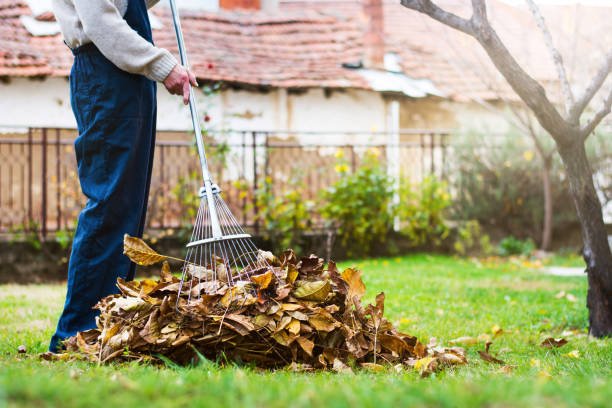When it comes to maintaining a clean, safe, and aesthetically pleasing landscape, shrub removal is an essential task. Whether you are preparing for a new garden layout, removing overgrown bushes, or simply trying to make your yard more manageable, understanding the proper methods for shrub removal can save you time, effort, and money. At K & C Tree Service Experts, we offer professional shrub removal services that ensure your landscape stays in top shape. Let’s dive into the importance of shrub removal, the tools you’ll need, and the best practices to follow.
Why Shrub Removal is Important for Your Landscape
Shrub removal is not just about aesthetics; it plays a crucial role in maintaining the overall health of your landscape. Overgrown shrubs can block sunlight, create unsightly areas, and compete for essential nutrients with other plants. Additionally, when shrubs are improperly maintained, they can attract pests or become breeding grounds for mold and diseases. Removing unwanted or unhealthy shrubs can make your garden look tidy and help the remaining plants thrive.
Signs It’s Time for Shrub Removal
Before you start removing shrubs, it’s important to identify whether the plants are truly beyond saving. Here are a few common signs that indicate it may be time for removal:
- Overgrowth: Shrubs that have grown out of control, blocking pathways or windows.
- Damage: If the shrub is dead, diseased, or severely damaged, it may not recover.
- Pest Infestation: Shrubs that attract pests, such as termites, aphids, or mold, can spread these issues to other plants.
- Unwanted Roots: If the shrub’s roots are causing damage to nearby structures or pipes, it’s better to remove it.
Tools Required for Shrub Removal
Shrub removal is not a one-size-fits-all task. Depending on the size of the shrub and its location, you will need a variety of tools to complete the process. Here are some of the most common tools used:
- Pruning Shears: Perfect for trimming smaller shrubs and cutting back any overgrown areas.
- Loppers: These are ideal for cutting larger branches that are too thick for pruning shears.
- Shovel or Spade: Used for digging around the root system to loosen the soil.
- Hand Saw or Chainsaw: For larger shrubs or trees that require more intense cutting.
- Digging Bar: A long metal tool used to loosen stubborn roots that are deeply embedded in the soil.
Step-by-Step Guide to Shrub Removal
Assess the Area
Before you begin, take a close look at the shrub you’re removing. Consider its size, proximity to other plants or structures, and the type of roots it has. This will help you determine which tools to use and whether professional help is necessary.
Cut Back Overgrowth
Use your pruning shears or loppers to cut the shrub down to a manageable size. This makes it easier to dig out the roots and minimizes the mess. Make sure to cut the branches close to the base of the plant but leave some stubs for easy removal.
Dig Around the Roots
Use a shovel to dig around the base of the shrub. Start about 6-12 inches away from the main stem to avoid damaging the roots. Dig deep enough to expose the roots, making sure to cut through any smaller roots that you may encounter.
Loosen the Root Ball
Once you have exposed the roots, use a digging bar or spade to loosen the root ball. Be gentle but firm, as you don’t want to break the main root system, especially if you plan to replant it somewhere else.
Remove the Shrub
Once the roots are loosened, pull the shrub out of the ground. If the shrub is large, you may need assistance, or you can use a winch or a similar tool to pull it out more effectively.
Fill the Hole
After the shrub is removed, fill the hole with soil to level the ground. You may also want to add compost or mulch to improve the soil quality for future planting.
Dispose of the Shrub
Proper disposal is important for both safety and environmental reasons. You can choose to compost the shrub if it’s disease-free, or you can contact a professional waste disposal service to handle the removal.
Shrub Removal for Large Areas
If you have a large area to clear, such as an overgrown hedge or a few large shrubs, it might be more efficient to hire a professional shrub removal service. Large shrubs often have extensive root systems that can be difficult to manage without the right equipment. Professional tree service companies have the necessary tools and experience to safely and efficiently handle shrub removal, minimizing the risk of damage to your property.
Aftercare Tips for Your Landscape
After the shrub removal process is complete, it’s important to take care of the exposed soil to prevent erosion and prepare the area for future planting. Here are a few tips:
- Water the Soil: Ensure the area is well-watered to help the soil settle and prevent dryness.
- Replanting: If you plan to replant in the same area, choose appropriate plants based on soil type, sunlight, and water availability.
- Mulching: Add mulch around the newly planted area to conserve moisture and suppress weed growth.
Common Mistakes to Avoid in Shrub Removal
While shrub removal may seem simple, there are a few mistakes that many people make. Avoid these common pitfalls:
- Not Cutting Back First: Failing to trim the shrub before attempting to dig out the roots can make the process harder and messier.
- Leaving Roots Behind: If you leave large root systems in place, the shrub might grow back, requiring another removal.
- Not Wearing Proper Safety Gear: Always wear gloves, eye protection, and long sleeves to protect yourself from sharp tools, branches, and debris.
FAQs
Q1: Can I remove a shrub myself, or do I need professional help?
It depends on the size and type of shrub. Small shrubs can often be removed by homeowners, but larger shrubs with deep root systems may require professional help.
Q2: How do I know if the shrub is dead or just dormant?
You can check for signs of life by gently scraping the bark or bending a branch. If there’s no green inside or it snaps easily, it’s dead.
Q3: How long does it take to remove a shrub?
The time it takes depends on the size of the shrub and the complexity of the root system. Smaller shrubs can take an hour or two, while larger ones may take a full day.
Q4: Can I plant something new right after removing a shrub?
It’s best to wait a few weeks to allow the soil to settle and ensure that there are no remaining roots that could interfere with new growth.
Q5: Is it necessary to remove the roots?
While not always necessary, removing the roots ensures that the shrub won’t grow back or compete with new plants in the area.
Summary
Shrub removal is a vital part of landscape maintenance, and following the right steps ensures a clean, organized, and healthy yard. Whether you’re removing a single bush or clearing a large area, always consider the size of the job and the tools needed to get it done right.



